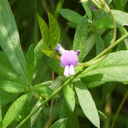Runtime Error in component "EnsEMBL::Web::Component::Info::SpeciesBlurb [content]"
Function EnsEMBL::Web::Component::Info::SpeciesBlurb fails to execute due to the following error:
Can't use string ("1") as a HASH ref while "strict refs" in use at
... /nfs/public/ro/ensweb/live/plants/www_115/ensembl-webcode/modules/EnsEMBL/Web/Utils/Publications.pm line
... 158.




![Follow us on Twitter! [twitter logo]](/i/twitter.png)
